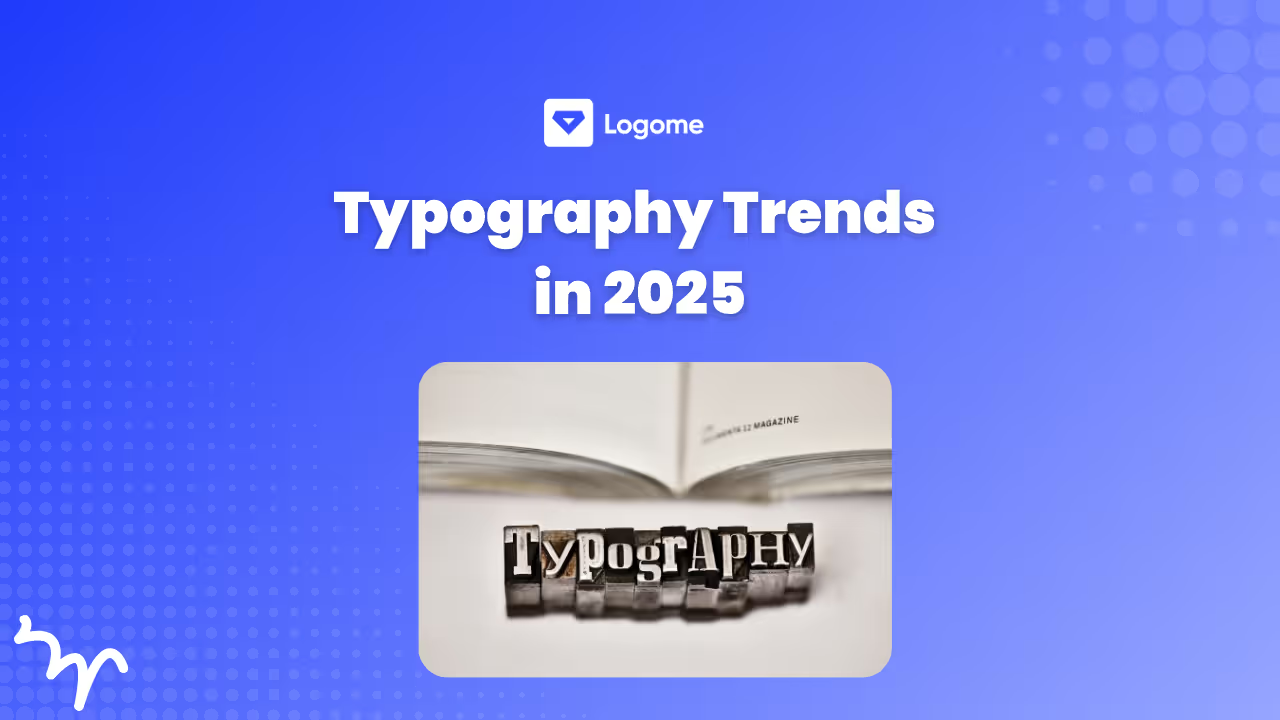Mercedes-Benz Logo and Its History: A Star-Studded Journey Through Time
Explore the iconic Mercedes-Benz logo’s evolution, from its three-pointed star to laurel wreath, symbolizing luxury, legacy, and mastery across land, sea, and air.
Explore the iconic Mercedes-Benz logo’s evolution, from its three-pointed star to laurel wreath, symbolizing luxury, legacy, and mastery across land, sea, and air.

The silver three-pointed star of the Mercedes-Benz logo is not just an emblem; it's a global icon that signifies luxury, innovation, and enduring quality. Whether cruising through the bustling streets of Tokyo or the winding roads of Tuscany, this logo is instantly recognizable, representing one of the world's most prestigious automotive brands.
But Mercedes symbol didn't gain its shine overnight—it was crafted over a century of pioneering spirit, engineering marvels, and a relentless drive for excellence.
Let's shift gears and delve into the storied history of Mercedes-Benz, its rise to automotive royalty, and the evolution of its famed logo that has become synonymous with luxury and performance.
Long before Mercedes-Benz became a symbol of luxury and performance, it was a fledgling company fueled by a bold vision and relentless innovation. From Karl Benz’s invention of the first gasoline-powered automobile to Bertha Benz’s groundbreaking journey, the early days of Mercedes-Benz were marked by daring moves and a drive to redefine mobility. This period set the wheels in motion for a brand that would not just make cars, but make history.
Imagine a time when horses were still the primary mode of transport, and the thought of a 'horseless carriage' seemed more like science fiction than reality. Enter Karl Benz, who in 1885, rolled out the world's first gasoline-powered automobile. However, the debut of this groundbreaking invention was met with skepticism and resistance from traditionalists who doubted the practicality and safety of the automobile.

The breakthrough came not from Karl himself but from his wife, Bertha Benz, who embarked on a daring journey in 1888. Bertha took the prototype on a 66-mile trip from Mannheim to Pforzheim, without her husband’s knowledge, making her the first person to drive an automobile over a long distance. This historic journey not only showcased the reliability of the automobile but also highlighted the need for service stations, as Bertha had to stop at pharmacies along the way to refuel with ligroin, a petroleum solvent.
Bertha’s journey wasn’t just a test drive; it was a declaration that the automobile was here to stay. Her drive dispelled doubts, inspired confidence, and accelerated the public acceptance of cars, helping pave the way for the mass adoption of automobiles globally.

Before the star symbol, the Mercedes logo was relatively modest, featuring the brand name in a simple, elegant typeface. It was a straightforward approach that spoke to the refined engineering and luxury that would become synonymous with the Mercedes name.

The year 1909 marked a turning point for Mercedes symbol as Gottlieb Daimler introduced the three-pointed star. Legend has it that Daimler first drew the star on a postcard to his wife, predicting that this emblem would one day shine over his factories.
The star symbolized the company's ambition to produce engines for use on land, sea, and air—a bold vision for a company that was already setting the standard for automobiles.

In 1916, the logo underwent a significant transformation, with the star now encased in a circle and flanked by four smaller stars, representing the company’s growing influence and aspirations.
This design was a statement of intent, showcasing Mercedes-Benz’s goal to be a leading player in every sphere of transportation.

The merger of Benz & Cie and DMG in 1926 brought about another redesign. The new emblem combined the iconic three-pointed star with a laurel wreath, a symbol of victory and success, which was part of the Benz & Cie logo.
This emblem not only unified the two companies' identities but also celebrated their shared heritage and combined strengths. It was a fitting symbol for a brand that prided itself on being at the pinnacle of automotive excellence.

Although the star had long been associated with the "Silver Arrows," Mercedes-Benz’s race cars that famously dominated the European racing circuits in the 1930s, it wasn’t until 2008 that the logo itself embraced a sleek, metallic silver. This change was more than cosmetic; it was a reflection of the brand’s modernity and its commitment to staying ahead of the curve in design and technology. Today, the silver star is a symbol of sophistication, innovation, and a legacy of excellence that spans over a century.
The Mercedes-Benz logo, a symbol of luxury and innovation, is much more than just a brand mark—it’s a powerful statement of design excellence. At its core, the emblem combines simplicity and elegance, featuring a sleek, silver three-pointed star enclosed in a circle. This iconic design not only reflects the company's commitment to precision engineering and high-quality craftsmanship but also embodies its aspiration to dominate land, sea, and air transportation. The logo’s design elements—its clean lines, balanced proportions, and timeless aesthetic—capture the essence of Mercedes-Benz’s heritage and forward-thinking vision, making it a standout symbol in the automotive world.

Right at the core of the Mercedes-Benz logo is the three-pointed star, and it's not just there for show—it’s a symbol with some serious drive. This star, originally derived from Daimler’s five-pointed family emblem, was stripped down to three points, each one aiming to dominate land, sea, and air. It’s like the brand's way of saying, “We’ve got our sights set on the whole universe.” The star’s sleek simplicity also mirrors the company’s vision to excel in all terrains, with a wink to their ambition that goes way beyond just the asphalt.

Next up, the laurel wreath, the logo’s fancy neckpiece borrowed from Benz’s original emblem.
If the star is the headline act, the wreath is the hype man, bringing in that touch of historical flair and celebrating victory and achievement. It’s like adding a medal to a sports car—it just fits.
This fusion of the star and the wreath doesn’t just look good; it’s a handshake across history, uniting two automotive giants under one banner of success and sophistication. Talk about a power couple!

The Mercedes logo didn’t stop evolving in shapes—it also had a color makeover. Moving from blue to a suave silver and gray wasn’t just a fashion choice; it was a statement. Silver screams luxury, precision, and that irresistible "you know you want me" appeal, while gray adds a layer of timeless modernity that says, "We're here to stay." Together, these colors turn the logo into a sleek, polished promise of the brand’s commitment to creativity and excellence.
Following the success of Bertha’s audacious road trip, the automotive landscape in Germany began to heat up, with multiple players vying for supremacy. Among them were Benz & Cie, founded by Karl Benz in 1883, and Daimler-Motoren-Gesellschaft (DMG), co-founded by Gottlieb Daimler and Wilhelm Maybach, two other giants of early automotive innovation. For years, these companies were locked in fierce competition, each striving to outdo the other with faster, more reliable vehicles.
However, the aftermath of World War I left Germany's economy in a precarious state, forcing many industries, including automotive, to reconsider their strategies. Recognizing the strength in unity, Benz & Cie and DMG merged in 1926, forming Mercedes-Benz. This merger was more than a business decision; it marked the dawn of a new era in luxury automotive manufacturing.
The combined resources, talent, and technological prowess of both companies positioned Mercedes-Benz to dominate the industry, driving forward with the ethos of “The best or nothing.”
From its inception in the early 20th century, the Mercedes-Benz logo has been more than just a brand mark. The Mercedes logo meaning reflects aspiration, quality, and relentless pursuit of perfection. Over the decades, the logo has evolved, but its core message has remained the same: Mercedes-Benz is a brand that stands for innovation, luxury, and a commitment to being the best.
Whether it's the laurel wreath symbolizing victory, the three points representing land, sea, and air, or the sleek silver hue that exudes modernity, each element of the logo tells a part of the Mercedes story. It’s a story of overcoming challenges, embracing change, and setting new standards in automotive excellence.
As Mercedes-Benz continues to navigate the future of mobility, from electric vehicles to autonomous driving, the iconic silver star will undoubtedly continue to shine as a beacon of luxury and innovation. This logo is not just a design—it’s a legacy, a promise of excellence, and a reminder that sometimes, reaching for the stars isn’t just about ambition; it’s about setting a course that inspires generations.
From the streets of Berlin to the highways of California, the Mercedes-Benz logo remains a testament to a brand that has never stopped moving forward. So next time you see that iconic star gliding down the road, remember: it’s not just a car logo; it’s a century-long journey of excellence that keeps on driving.
Discover intriguing details behind the iconic Mercedes-Benz logo. From its storied origins to its evolving design, these fun facts reveal the star-studded legacy of this prestigious brand.
Mercedes-Benz has a rich history in motorsports, with its "Silver Arrows" dominating Grand Prix racing since the 1930s. The team’s silver color originated from a weight-saving strategy where the paint was stripped off the cars, leaving only the silver aluminium body, which became an iconic symbol of speed and engineering prowess.
Mercedes-Benz vehicles are sold in over 200 countries, and the brand operates under twelve different names, including Mercedes-AMG, Mercedes-Maybach, and Smart, each catering to different market segments but all unified under the star.
Mercedes-Benz holds the title for producing the world's most aerodynamic production car, the Mercedes-Benz EQS, which boasts a drag coefficient of just 0.20. This achievement underscores the brand’s relentless pursuit of innovation and efficiency.
Mercedes-Benz has been at the forefront of automotive safety innovations, introducing crumple zones, ABS (anti-lock braking systems), and ESP (electronic stability program) long before these features became industry standards. Their dedication to safety has saved countless lives and set benchmarks for the entire automotive industry.
The Mercedes-Benz logo is not just an emblem; it’s a legacy on wheels. With its ambitious three-pointed star reaching for the skies and its laurel wreath tipping the hat to its victorious past, the logo tells a story of unity, ambition, and relentless pursuit of greatness. As Mercedes-Benz continues to drive forward, this logo is more than a badge on a car—it’s a symbol of luxury, performance, and a little bit of “We got this” attitude. Whether you’re admiring it in your driveway or catching a glimpse of it zooming past on the highway, the Mercedes-Benz logo is a reminder that some icons are meant to shine bright and travel far.
For those fascinated by the evolution of iconic logos, LogoMe's LogoMaker and blogs offer a treasure trove of insights into how famous brands have transformed their visual identities over time. Whether you’re looking to create your own memorable logo or simply enjoy learning about the creative journeys of brands like Mercedes-Benz, our blog resources provide a deep dive into the artistry and strategy behind effective branding. Discover the stories, design elements, and little-known facts that make these logos timeless symbols of success. Let LogoMe inspire your next logo evolution!



Discover how 500,000+ businesses and creators are using our AI logo maker in their Logo creation.



